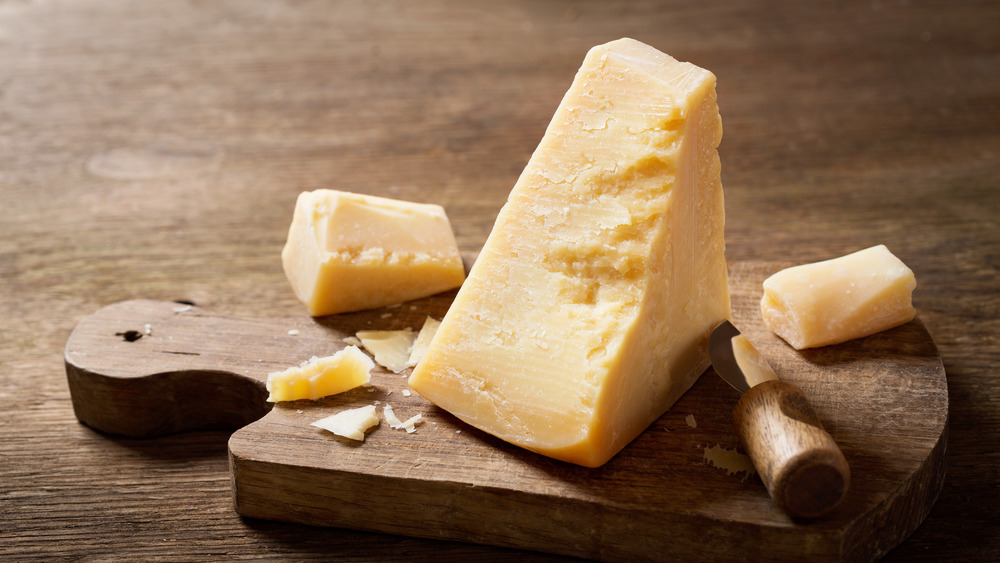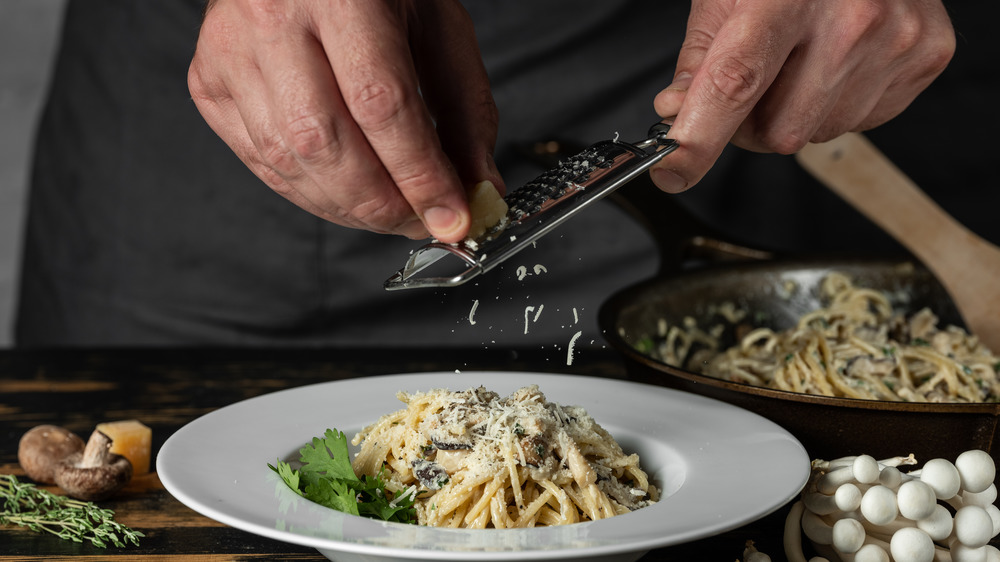How Authentic Parmesan Is Different From The American Version
Any plate of pasta isn't complete without a sprinkle (or a little more) of Parmesan cheese on top. If you're the type of person who can never have enough cheese on their pasta, you might already consider yourself a Parmesan connoisseur. But what you might not know is that the cheese you're used to seeing on grocery store shelves probably isn't real Parmesan cheese.
According to Today, the first step in finding real Parmesan is checking the label for the words "Parmigiano-Reggiano." Unlike the packages of pre-grated Parmesan you find at the store, rinds of real Parmigiano-Reggiano come from Italy and will have the name burned into the rind. Labeling cheese with "Parmigiano-Reggiano" is legally protected and reserved only for cheese from Italy, so if the rind has the label, you know it's authentic. Also, you'll get better quality cheese if you purchase a wheel or wedge rather than pre-grated bags or tubs.
You'll pay more than a dollar or two for real Parmesan cheese, too. According to Insider, a wheel of authentic Parmigiano-Reggiano from Italy can cost over $1,000 for an 88-pound wheel, which averages out to over $11 per pound. One wheel of authentic Parm is aged for over a year, and only comes from the Emilia Romagna region of Northern Italy, which is why it's rarer, more expensive, and probably not what you've been putting on your pasta.
How American Parmesan cheese is different
Italian Parmigiano-Reggiano is only produced in a specific region; American Parmesan is a different story. Unlike its Italian counterpart, American Parmesan isn't regulated, so while you could end up buying the authentic stuff from Italy, you probably aren't. Usually, most U.S. versions of Parmesan are only aged for about 10 months.
According to Forbes, real Parmigiano-Reggiano is only allowed to have three ingredients: milk, salt, and rennet. However, American Parmesan usually has other additives or preservatives, and you can spot them by checking the ingredients list. Today reports that some packaged Parmesan cheeses even contain cellulose, which is made from wood pulp and definitely sounds less-than-appetizing. While it's used in a lot of different foods, including ice cream, if you're looking for authentic Parmigiano-Reggiano, it's not what you want to see on the packaging.
But just because American versions of Parmesan aren't authentic, doesn't mean you can't still find good cheese to top your pasta. For the best flavor, look for wedges to shred yourself instead of pre-grated packages of cheese. And if you're really feeling a fancy cooking night, you could always try finding real Parmigiano-Reggiano at a specialty store or Italian market.

